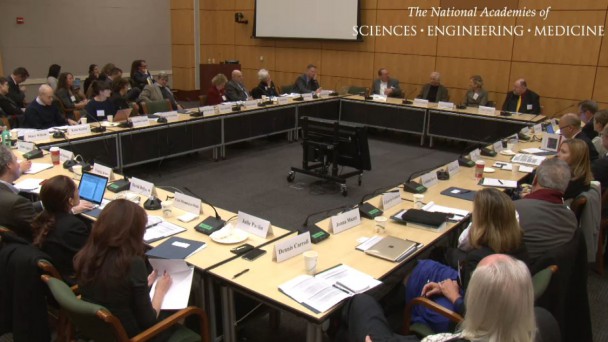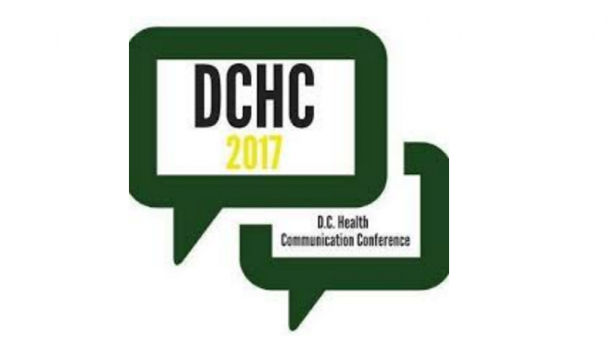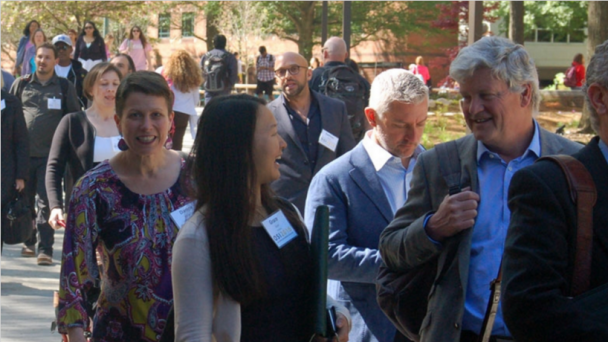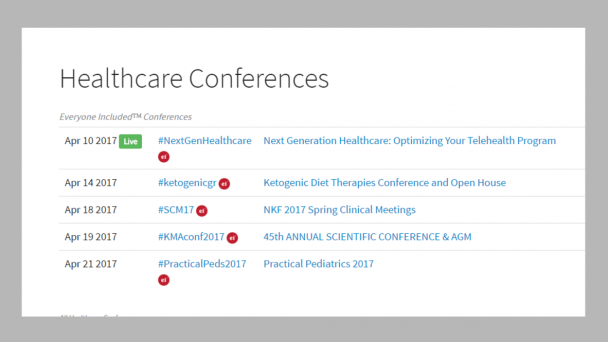Summary
What: Workshop on Building Communication Capacity to Counter Infectious Disease Threats
When: December 13, 2016 – December 14, 2016 (8:30 AM Eastern)
Where: Keck Center (100) • 500 Fifth St. NW, Washington, DC 20001
Topics: Diseases, Global Health, Public Health
Activity: Forum on Microbial Threats
OnAir Post: HMD – Communication and Infectious Disease
Information
Link to webcast Agenda Planning Committee
HMD website: nationalacademies.org/hmd/About-HMD.aspx
Contact: MicrobialThreats@nas.edu
Address: Keck Center
500 Fifth St. NW
Washington, DC 20001
This workshop, organized by the Forum on Global Health – Health and Medicine Division of the National Academies of Science, Engineering and Medicine- is free and open to the public, but registration is required. The workshop will also be webcast, and all videos of the webcast recordings will be archived on the workshop website.
Overview
Building communication capacity is critical for the preparedness, detection and response to infectious disease threats. The International Health Regulations (IHR) establish risk communication as a core capacity that member states must fulfill to strengthen the fight against these threats. Despite global recognition of the importance of complying with IHR, 67% of signatory countries report themselves as not compliant. This lack of capacity has grave consequences as shown during the West Africa Ebola epidemic. The lack of communication infrastructure and procedures in place delayed the transmission of key messages from public health and government officials to the public. Furthermore, no mechanisms were in place for the public to share their questions, concerns and fears with public health authorities.
By investing in communication capacity, public health and government officials would be prepared to provide advice, information and reassurance to the public once these events occur as well as to rapidly develop messages that are coordinated among all public and private sectors involved. Many efforts have been implemented to address the gaps in communication capacity during these situations. However, most of them, despite being successful, have not been replicated or tested in different scenarios. Guidance has been provided with the development of frameworks, standards and protocols as well as many conceptual approaches to communication for outbreaks, but they have not been streamlined or integrated, or translated well into practice. Moreover, some of these guidance documents have not considered the entire political, social, and cultural environment in which communication occurs.
There is a need to learn from what has been done and to identify how to use the evidence base to create a research agenda that will allow this field to move forward. By bringing together stakeholders at different levels of outbreak detection and response, this workshop will provide a venue to review progress and needs in strengthening communication capacity for dealing with infectious disease threats, both for outbreaks and routine challenges.
Workshop’s specific objectives
• Examine the key elements of communication capacity necessary to address infectious disease threats, including:
o Scientific foundations for effective communication
o Roles of scientists and health professionals, the community, and media
o Evidence-based methods for designing, pretesting, and evaluating of communication strategies
o Multi-sector support for investment in these capabilities
• Examine the current state of science regarding public engagement and trust, the understanding of risk and health-protective behaviors, and behavioral responses, including:
o The cognitive, affective, social, and economic factors shaping health-related decision making
o The roles of persuasive vs. non persuasive communication
o The roles of traditional and digital media
o Proactive and reactive management of misinformation and rumors
o Bidirectional communication platforms, both to engage the public and to generate data
• Assess the implications of the 2005 International Health Regulations (IHR) and lessons learned from recent outbreaks
• Discuss research needs, opportunities, and barriers for collaboration among, across, and within the epidemiology, biomedical, and social and behavioral science communities.
Health and Medicine Division (HMD)
The Health and Medicine Division (HMD) is a division of the National Academies of Sciences, Engineering, and Medicine (the National Academies). The National Academies are private, nonprofit institutions that provide independent, objective analysis and advice to the nation and conduct other activities to solve complex problems and inform public policy decisions related to science, technology, and medicine. The Academies operate under an 1863 congressional charter to the National Academy of Sciences, signed by President Lincoln.
Our Work
HMD’s aim is to help those in government and the private sector make informed health decisions by providing evidence upon which they can rely. Each year, more than 3,000 individuals volunteer their time, knowledge, and expertise to advance the nation’s health through the work of HMD.
Many of the studies that HMD undertakes are requested by federal agencies and independent organizations; others begin as specific mandates from Congress. While our expert, consensus committees are vital to our advisory role, HMD also convenes a series of forums, roundtables, and standing committees, as well as other activities, to facilitate discussion; discovery; and critical, cross-disciplinary thinking.
About Our Division Name
HMD previously was the Institute of Medicine (IOM) program unit of the National Academies. On March 15, 2016, the division was renamed HMD, building on the heritage of the IOM’s work in medicine while emphasizing its increased focus on a wider range of health matters. To learn more, please visit About Our Division Name.





